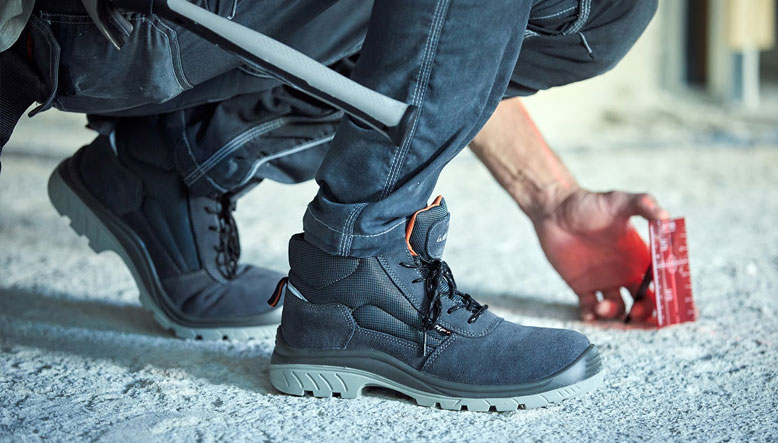Comfortable safety boots are not only an essential tool to protect your feet, but they also play a crucial role in your overall health and well-being during long working days. Choosing the right footwear can make the difference between a productive day and one filled with discomfort and discomfort. The perfect balance between comfort and safety is essential, and in this article we will give you the best tips to help you make the best choice.
In addition, we will discuss some key features such as comfortable steel-toed safety boots, waterproof boots and other options that can make your work experience safer and more comfortable.
Why is comfort essential in safety boots?
One of the most common mistakes when choosing safety boots is ignoring the importance of comfort. Working long hours on your feet or on the move in inadequate footwear can lead to fatigue, foot pain and even long-term health problems such as muscle strain and back pain. Comfortable safety boots not only improve your physical well-being, but also reduce the risk of accidents by allowing you to move with greater agility and confidence.
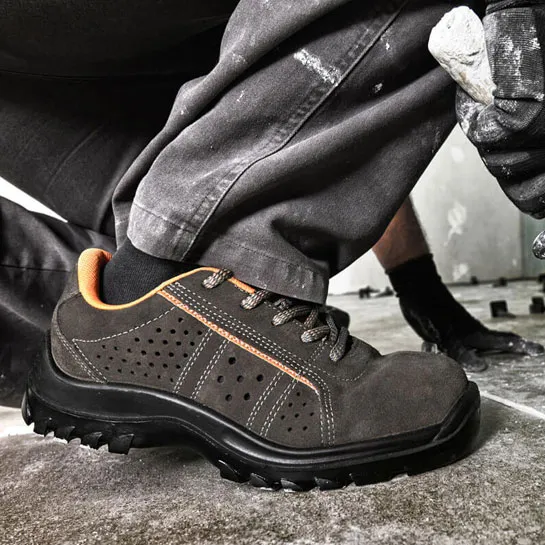
Safety boots should not only protect your feet from dangerous objects, but also allow you to move efficiently without causing discomfort. In the long run, a good pair of comfortable safety boots can be the difference between a healthy working life or chronic problems resulting from poor footwear.
Key features for a safe and comfortable safety boot
a) Manufacturing materials
The type of material from which comfortable safety boots are made directly influences their durability, comfort and breathability. Leather safety boots, for example, are known for their durability, but can be heavier and less breathable than boots made of synthetic materials. On the other hand, materials such as rubber or composites such as thermoplastic polyurethane (TPU) offer an excellent combination of light weight and chemical resistance, making them an ideal choice for work in industrial environments.
Breathability is another essential feature. Comfortable, well-ventilated safety boots will prevent the accumulation of sweat and reduce the chances of developing infections or skin irritations.
b) Size and fit
Choosing the right size is vital for long-term comfort in comfortable safety boots. In fact, many experts recommend opting for boots half a size larger to allow room for the natural swelling of the feet during the workday. This extra room also allows for thicker socks to be worn during the cold months, keeping feet warm and snug at all times.
It is important to try on comfortable safety boots with the same socks that will be used on the job. Insoles also play a crucial role in fit; a good cushioned insole can significantly improve comfort and prevent sole pain.
How to choose comfortable safety boots for your needs
Not all comfortable safety boots offer the same level of comfort. Depending on the industry you work in, comfort needs vary. For example, in construction, it is essential that boots not only provide protection with a steel toe cap or puncture-resistant soles, but also have an ergonomic design that can withstand long hours of work without causing fatigue. Comfort should not be sacrificed for protection; both elements should coexist in good , comfortable safety boots.
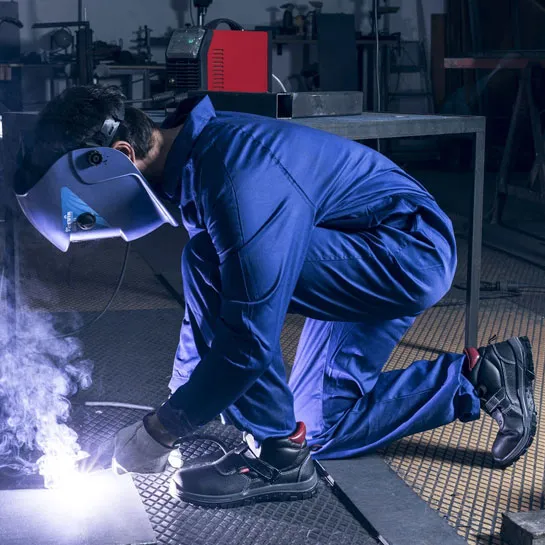
For those who work in environments where liquids are handled or are exposed to slippery surfaces, comfortable safety boots with lightweight, slip-resistant soles are a must. In addition to preventing accidents, these boots reduce pressure on the joints when walking, contributing to greater comfort and safety throughout the day.
Non-slip soles: Why they are indispensable for comfort and safety
Sole design plays a key role not only in safety, but also in the comfort of the footwear. Comfortable safety boots with slip-resistant soles not only prevent accidents, but also allow feet to move more easily on uneven or slippery surfaces. The traction they provide reduces fatigue and muscle strain, improving overall comfort throughout the day.
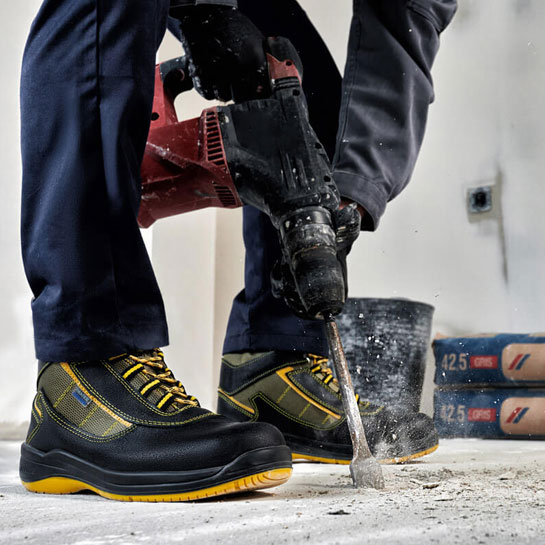
Soles made of materials such as polyurethane (PU) or rubber are ideal in environments where the risk of slipping is high. In addition, they are lightweight, which means they do not add unnecessary weight, facilitating movement and improving long-term comfort in your comfortable safety boots.
Waterproofing and breathability: keys to comfort in your safety boots
Comfort in comfortable safety boots depends not only on their fit, but also on how they manage moisture. Waterproof and comfortable boots are essential in wet environments or where you are in contact with liquids. Keeping feet dry is essential to avoid problems such as discomfort or infections.
However, boots must also be breathable to allow air circulation and prevent sweat accumulation. Comfortable safety boots that combine waterproofness and breathability ensure greater comfort in all weather conditions, keeping your feet cool and dry throughout the day.
The importance of choosing ergonomic insoles for your safety boots
Insoles are an essential component to the comfort of comfortable safety boots. Often overlooked, cushioned and ergonomically designed insoles can make a big difference in terms of comfort. They help distribute weight evenly and absorb impact when walking, which reduces stress on the feet and joints.
If you have specific conditions, such as flat feet or heel pain, investing in custom orthotic insoles can greatly improve your daily experience with comfortable safety boots. These inserts not only provide additional support, but also help to better fit the footwear, preventing the foot from shifting uncomfortably inside the boot.
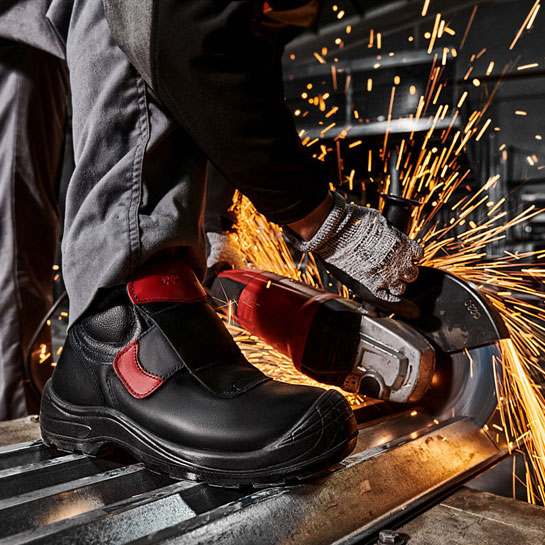
Choosing the right comfortable safety boots for your needs is not something to be taken lightly. From slip-resistant soles to waterproofing and the use of ergonomic insoles, all of these factors influence the level of comfort and safety you will feel during your workday. Well-designed, comfortable safety boots can not only protect your feet, but also improve your overall well-being, allowing you to work more efficiently and without discomfort.
Taking these aspects into account will ensure that you not only acquire safe boots, but also guarantee the comfort you need to face any work challenge.
How can I be sure that comfortable safety boots will fit me?
– It is important to try the boots on with the socks you will wear to work and walk around in them to make sure there are no pressure points. Also, opting for a half size larger can be helpful to allow room for the natural swelling of the feet.
What materials are best to ensure comfort in safety boots?
– Synthetics and rubber offer lightness and flexibility, while leather provides durability. However, breathable boots with slip-resistant soles tend to improve comfort during long working days.
Should comfortable safety boots always be waterproof?
– It depends on the work environment. If you work in wet or liquid environments, waterproof boots are essential. For other environments, breathability may be more important to keep feet cool and dry.

